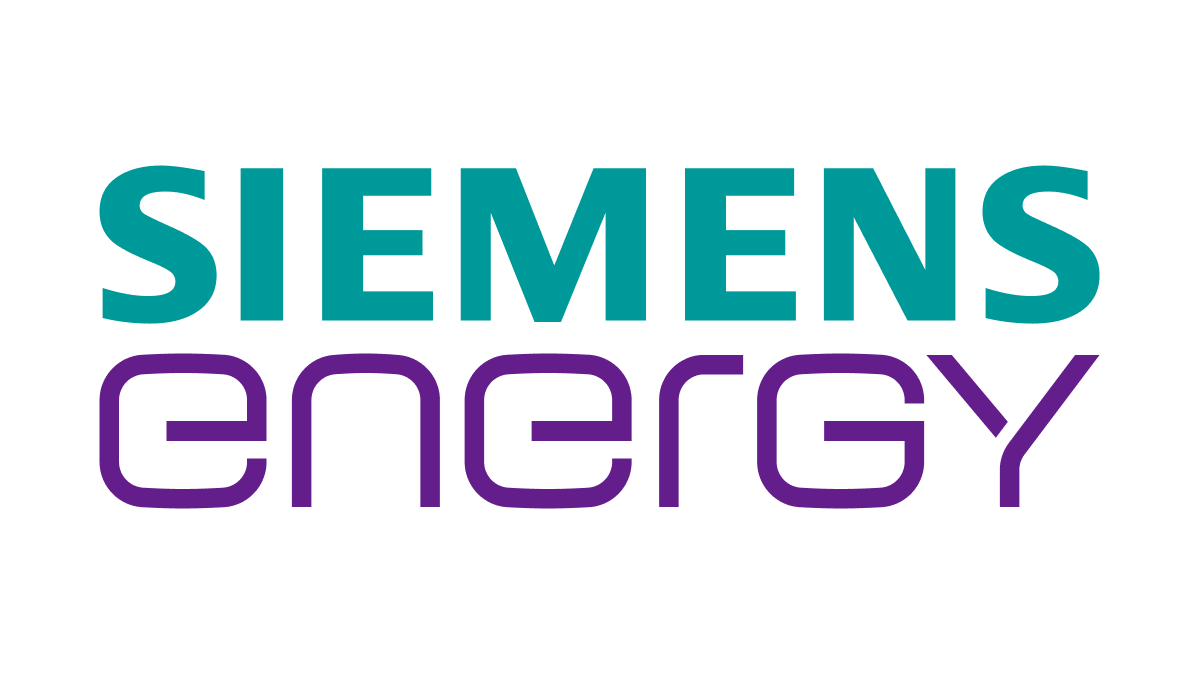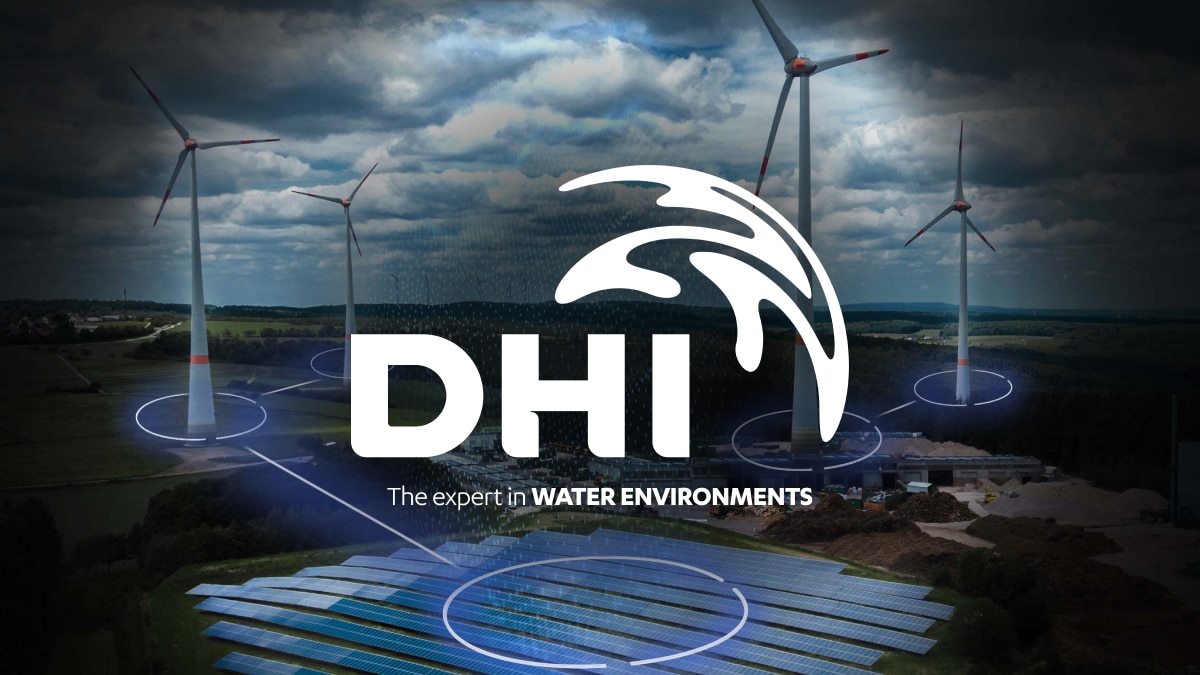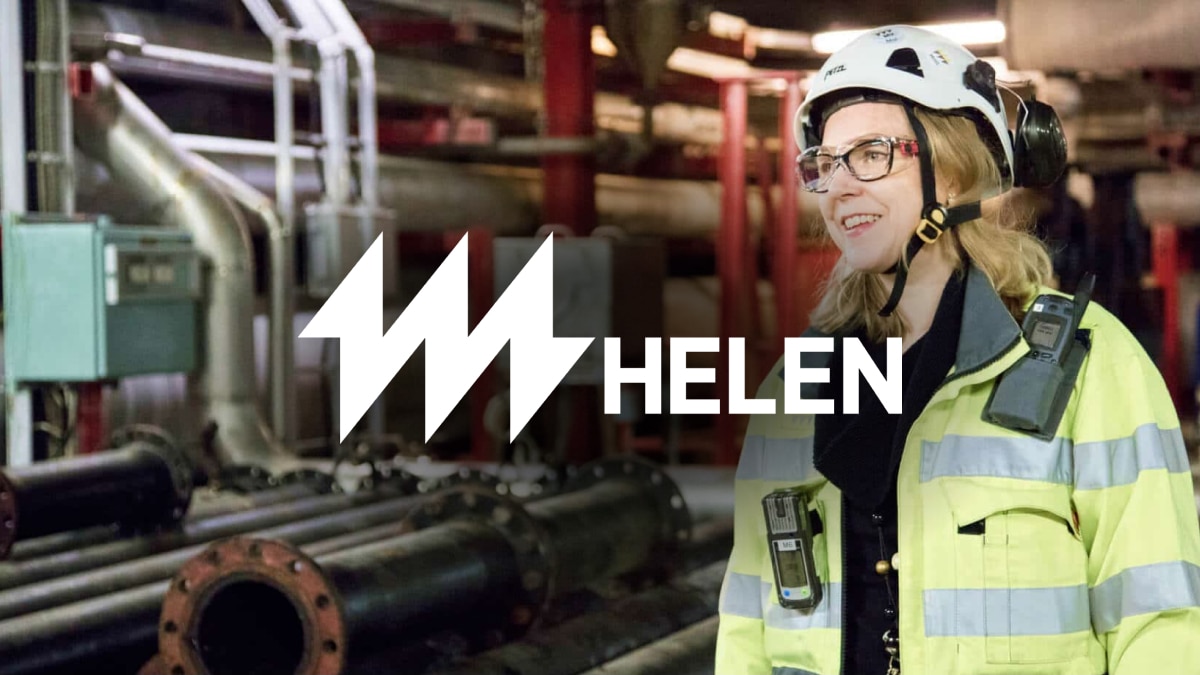Siemens Energy builds a renewable future with AMD EPYC™ CPUs
Siemens Energy switched to AMD EPYC™ CPUs to triple performance and cut energy use by 30%, enabling the company to manage controls of huge new renewable energy projects
The transition towards sustainable energy sources requires an upshift in supporting computer performance. One of the leading suppliers of solutions for this industry is Siemens Energy. Switching to AMD EPYC processors gave Siemens Energy the high performance and low power consumption it needed for a reliable, trustworthy service as demands increase.
“We develop and provide control systems and digitalization solutions for power generation,” says Johannes Laubach, Omnivise T3000 Product Manager, Siemens Energy. “Our Omnivise T3000 control system is a software and hardware solution for power generation and distribution. A lot of continuous controls are taking place with protection and automation systems ensuring the safe operation of the assets. We provide interfaces for the operators and diagnostic systems. We are archiving a lot of data, including all the events from the process. Our built-in security features and hardening measures ensure system compliance. Almost everything is happening on the edge. Control technology does not depend on big data centers. We need long life cycles, low power consumption, and high single-core performance.”
To satisfy these demands, Siemens Energy is deploying powerful computing resources next to the power generation and distribution assets. “We have specific performance requirements for safety,” says Laubach. Response times must be fast enough for operators to react immediately as situations evolve. This is where AMD EPYC processors have proven to be an attractive solution for Siemens Energy’s needs.
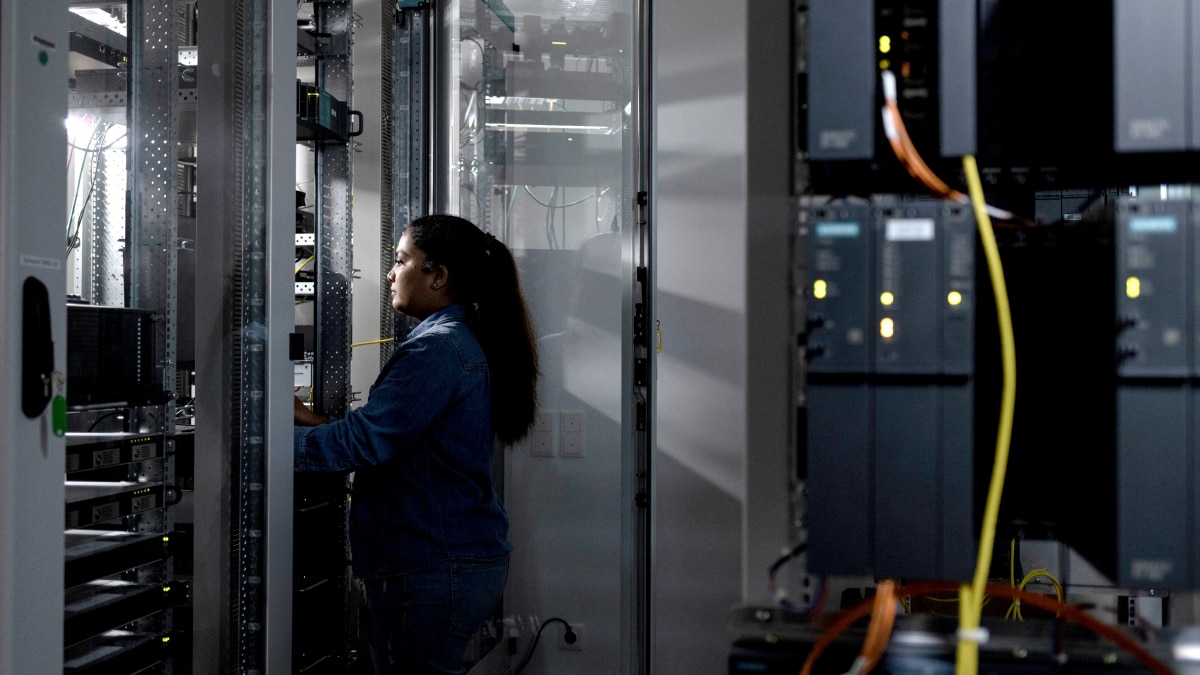
High demands of digital twin simulation
“We are technology people, so we already knew about EPYC CPUs,” says Laubach. “Performance comparisons made us realize AMD EPYC CPUs would be a good fit. We compared benchmarks and quotes, then told HPE which specification we needed and HPE designed the system according to our requirements.”
“We have two typical applications within Omnivise T3000,” says Sebastian Zahn, team lead for Omnivise T3000 Simulator execution, Siemens Energy. One is power plant automation. Here thousands of signals from a power plant are read in, monitored, and processed to form control variables which are then sent out into the field. This must happen in real time and with high reliability. The second application, which is also very compute-intensive, is simulation. Our simulators are digital twins realized within T3000. They reproduce the control logics of the real production system but also replicate the process behavior.”
“We take a 1:1 copy of the control logics from the real plant, which already requires a lot of performance, and then add simulation on top,” says Zahn. “The process simulation doubles the demand for computing performance. We had reached the limit of our previous server processors. Our system administrators had to optimize memory allocation and system settings to get complex simulations running, however there was nearly no reserve left. Then we got a challenging order for a new project for oil- and gas-fired power plants in the Middle East. Simulating it with our old processor type was just not feasible anymore.”

Performance boost with AMD EPYC™ CPUs
Siemens Energy could have run the process simulation on an external server, but the goal was and is to provide solutions that are fully integrated into a single T3000 system. “We tested an HPE ProLiant DL385 server powered by AMD EPYC processors,” says Zahn. “We imported three of our biggest previous projects to create a comparable load on the server as we expected for the upcoming project, running these three power plants in parallel. Everything operated smoothly. One of these projects would have maxed out our previous server and now we're able to run three in one place, meaning the new server powered by an AMD EPYC CPU has performance that is three times higher than that of our old one. We were confident that we would be able to execute this project without an external server. This is a big opportunity for the future to run a similar project of this size with only one application server. It was a game changer for the simulator team to have this new server powered by an AMD EPYC CPU.”
“We did our own benchmarking tests in the lab,” adds Laubach. "We also saw a 20 percent increase in performance compared to competitor processor solutions."
Power plants run for very long periods of time, often decades. We usually upgrade the hardware and control system software every five to eight years. This ensures secure and reliable operation,” says Laubach. "Upgrading to the new AMD EPYC CPU-powered servers went without any complications. This is one of the unique selling points of T3000, as we can upgrade without interrupting the operation of the power plant.”
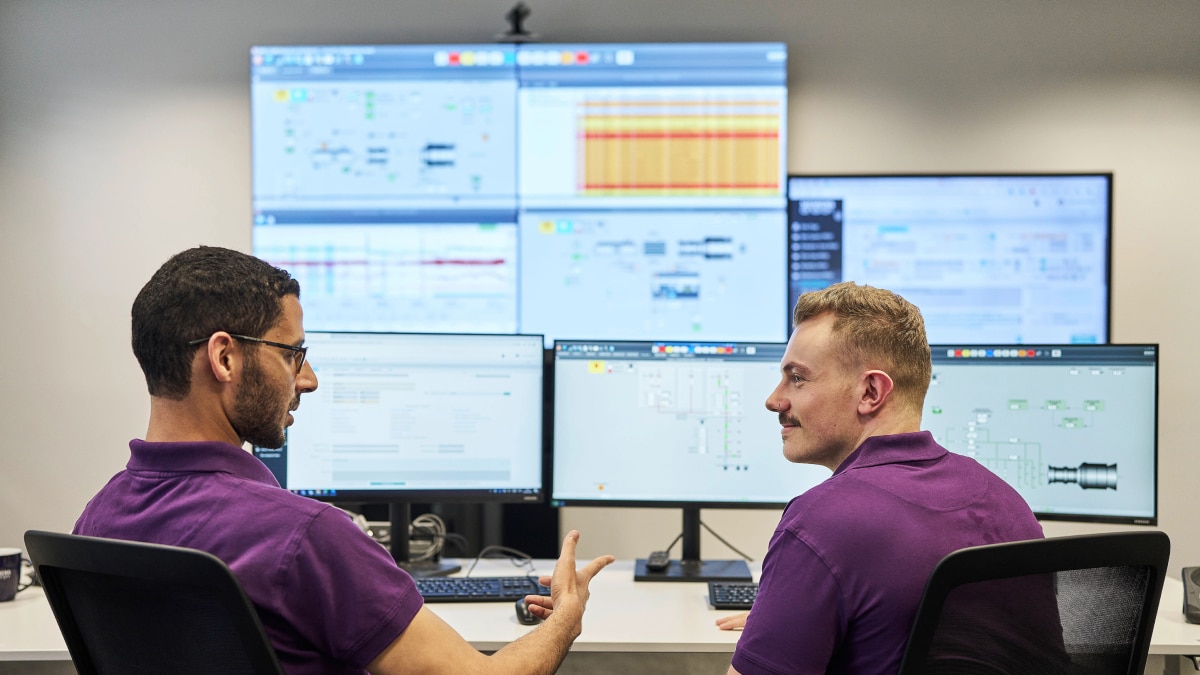
Dependable AMD technology
However, the new servers also enable capabilities that are particularly relevant to the transition to sustainable power generation. “For new projects, especially with renewable energies, we have the challenge resulting from increasing signal numbers and event rates,” says Laubach. “We are talking about hundreds of thousands of signals and events per second. All these signals must be processed and archived. The difference between a renewable project and a conventional project is that in a renewable project, there are many small assets that produce a lot of data. When combining a solar power plant with battery storage with hundreds of thousands of battery cells, each cell has current, voltage, and some diagnostic data, and all this must be processed and archived. To handle these projects, hardware performance is important. We are now confident to target big renewable projects like huge offshore wind farms or very big solar photovoltaic (PV) power plants.”
AMD EPYC CPUs have also proved more efficient on energy requirements. “Switching to AMD EPYC processors reduced power consumption by over 30 percent,” says Laubach. “This was a high reduction compared to our previous solution. Whenever a customer is focused on sustainability, we can immediately provide information.”
Siemens Energy has mainly deployed HPE ProLiant DL385 servers powered by 16-core AMD EPYC 9124 CPUs, with a small number of servers powered by 32-core AMD EPYC 9334 CPUs for special usage cases. “We have over 800 systems with the 16-core CPU,” says Laubach. “The 32-core CPU is mainly required for our digital solutions like Omnivise Process Information,” says Laubach. “AMD EPYC CPUs are now our only choice. This is the qualified system for this lifecycle period. The single-core clock speed and performance were the main features that attracted us to AMD EPYC CPUs.”
“We are very glad to have AMD EPYC processors because they give us new opportunities to execute projects,” says Zahn. “If you need computing power, consider this type of processor, especially for very demanding applications.”
“We have a lot of big simulator projects ahead, and we’re glad we can now serve this market,” concludes Elisabeth Burghart, product manager, Omnivise T3000, Siemens Energy. “Before AMD EPYC processors, that would have been difficult.”
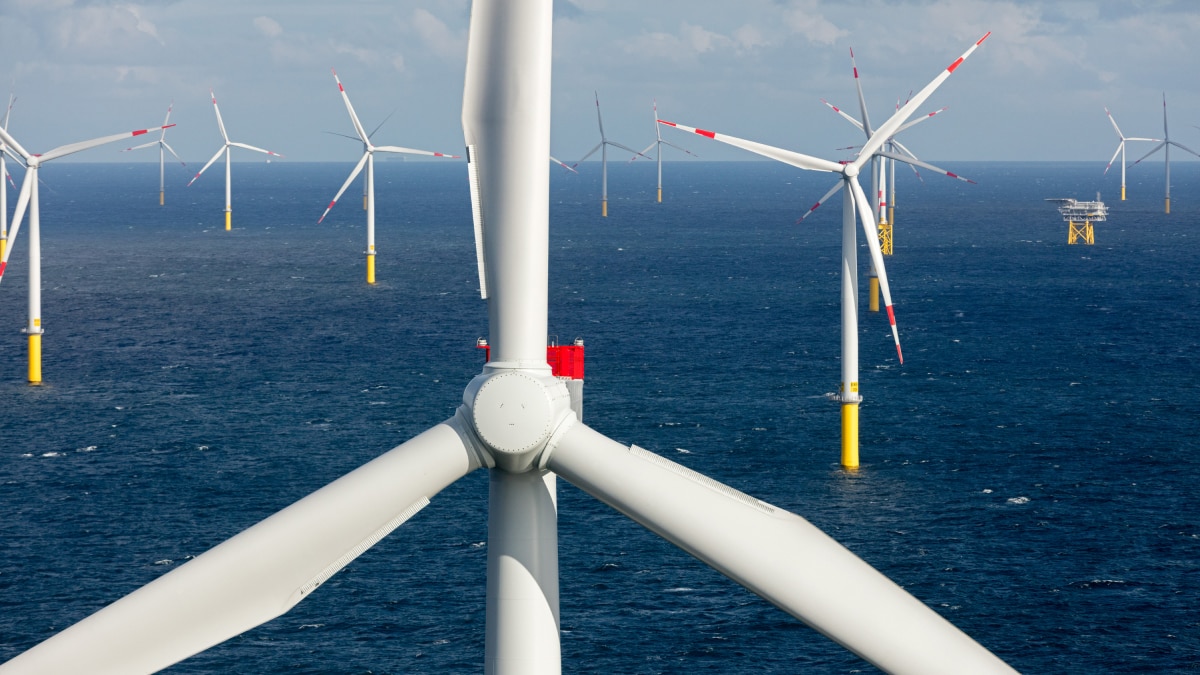
About the Customer
Siemens Energy is one of the world’s leading energy technology companies. The company works with its customers and partners on energy systems for the future, thus supporting the transition to a more sustainable world. With its portfolio of products, solutions and services, Siemens Energy covers almost the entire energy value chain – from power and heat generation and transmission to storage. The portfolio includes conventional and renewable energy technology, such as gas and steam turbines, hybrid power plants operated with hydrogen, and power generators and transformers. For more information visit siemens-energy.com/t3000.
Case Study Profile
- Industry:
Energy generation - Challenges:
Previous servers had reached performance limits and couldn't process the massive data and complex simulations needed for modern power plants, especially huge renewable energy projects - Solution:
Deploy 11th Generation HPE servers powered by 16-core AMD EPYC™ 9124 and 32-core AMD EPYC™ 9334 CPUs - Results:
At least 3x higher simulation performance and over 30% less power than previous servers; 20% faster performance than competitor processors, enabling large new projects - AMD Technology at a Glance:
16-core AMD EPYC ™9124 CPUs
32-core AMD EPYC™ 9334 CPUs - Technology Partner:



